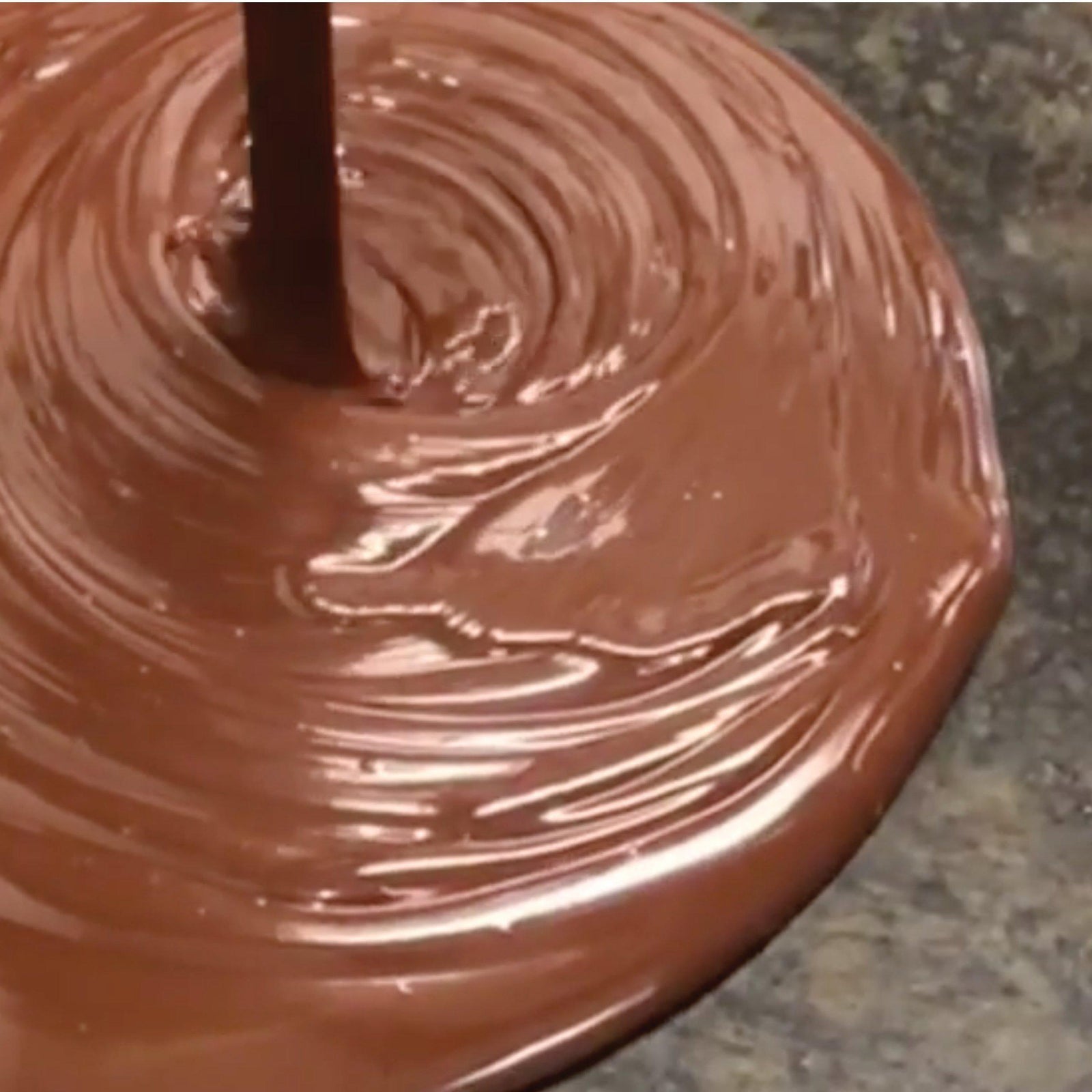
2. After warming up the roaster, we select approximately 3 lb. of beans to put in the oven. All of our test batches are monitored to ensure that the process is as precise as possible.
Once the initial temperature of the roaster and the beans have risen, our Assistant Chocolate Maker, Nainoa Moore, reduces the heat and will then time the batches depending on how light or dark he would like the roast to be.
3. Once cooled we pour the beans into the cracking machine. Here, the beans are broken down into cacao nibs and shells. We first remove the unwanted shells in the winnower and then double check by eye to see if any small parts of the shell remain.
We now have roasted and shelled cacao nibs to move onto the next step
4. Nainoa then weighs the nibs to calculate how much cocoa butter, and sugar is needed. The same formula is followed for all initial test batches –- a 68% dark chocolate formulation that is used by several international cacao awards and tasting panels, (65% nib, 3% cocoa butter, 32% sugar).
5. Test melangers (wet grinders) are then set up to mill the cacao nibs and sugar into uniform particles that result in a smooth finished texture when eating the chocolate. The cocoa butter is also slowly added during this process. To ensure that we get an ideal particle size, this process takes approximately 1-2 days.
“The particle size distribution is important because it determines how smooth the chocolate is,” says chocolate maker Nainoa. In addition to having a balanced flavor profile, “a high-quality chocolate will be silky smooth because it has an ideal particle size.”
Nainoa then records the total time it takes to mill to the target particle size and then adds the remaining cocoa butter. The hot liquified chocolate is poured through a sieve to separate any stray course particles and is transferred into a bowl in preparation for the tempering process.
6. If you follow @mauichocolate on Instagram or Facebook then you will see our video of the hand tempering process posted on September 11th.
The chocolate is heated until it reaches the ideal temperature of around 115-120°F where the tiny crystals in the cocoa butter have completely melted. Next, we will pour out 80% of the hot chocolate onto a clean, cold marble counter. The chocolate is spread out in an even layer and then swiftly gathered back up into the mix. We have to work fast to make sure the chocolate does not cool unevenly. This process is repeated until the chocolate has reduced to the desired temperature.
7. Taking the chocolate through this temperature curve allow the crystals to begin to form again. The cooled chocolate is then transferred into the bowl with the remaining 20% of warm chocolate. By mixing the two together, we bring the temperature back up allowing us to easily pour it into the molds.
8. Once the test bar is cooled we will check to see if it properly tempered. The appearance should be uniformly shiny and smooth rather than flat and discolored.
9. The next step is the “snap test.” When we snap a bar it should make an audible snapping noise with a clean break and no crumbling.
10. Once the test bar has been approved, we pour the rest of the chocolate into the remaining molds. They are then cooled, examined, and hand packaged. After a period of rest, which allows the flavors of the solid chocolate to balance and mature, our team tastes, evaluates and discusses possible future revisions to roasting and formulation. Our goal in during R&D is to find the ideal process that allows the inherent flavors and aromas of each variety of cacao to be fully expressed.
We would like to say a special Mahalo to Manoa Chocolate for allowing us to lease their facilities and use their equipment while our Lahaina Chocolate Factory is under construction.





Leave a comment (all fields required)